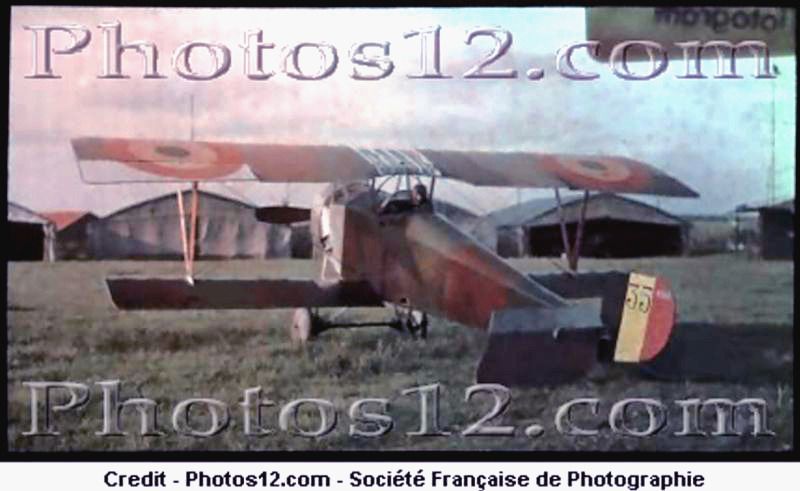Hello Raoul
- The camouflaged Belgian Nieuport is not genuine as shown by the transparent center section of the top wing.
- As a single seater with an arched strut in front of the cockpit, it has been delivered first in Summer 1915, with a clear dope finish, several months before the introduction of the Verdun camouflages.
- With an orthochromatic film the camouflage pattern won't show anything like a 1916 factory finish which should appear as dark, light, dark (wide), light, dark on the top wing and dark, light, dark on the fuselage. See the b&w Belgian photo.
- The very few Nieuports 10 truly showing a Verdun like camouflage had a clear dope finish before. When and how they got a new finish is not known, before or after the Verdun colors were discontinued from mid-1916 onward ? B&w photos show a dark and little contrasted finish.
- As long as we don't know when and how the Belgian (or the French ?) refurbished this particular plane, every assumption about the colors is speculative.
Firstly and to ALL: My deepest condolences regarding the events of this past Friday.
Hello Blake,
Yes you are correct. This aircraft was delivered in Ecru with lining around the perimeter of the flying surfaces as well as the longerons of the fuselage. I have discussed this very matter with Mr. Allen Toelle some years back and let us say he has backed-up the comment that there were indeed Nieuport 10's in camouflage.
But please do not quickly discard this wonderful photograph for the above truism. There are TWO key factors present in this image itself that answer questions regarding early Nieuport aircraft colors.
What I am saying is this:
This aircraft was for the most part; an
in-the-field camouflage painted aircraft and not a factory camouflage finished machine. While the top of the upper flying surface clearly has no resemblance to the genuine factory camouflage paint pattern or it's application,
the fuselage and perhaps the empanage as well were painted in a fashion somewhat resembling the actual camouflage as supplied from the Nieuport Factory, while using what appear to be the actual colors of the factory camouflage. The colors used on the lower left wing are spot on with those found on the Lt. Chaput N940 Nieuport 11 and the misted application found there is a duplicate as well.
More importantly, when viewing the high resolution version of this copyrighted image, it is most obvious the lower port/left wing is not only a newer replacement, but it also is finished with the
genuine Nieuport Factory applied "Dead Leaf camouflage". This is easily discernible in high resolution by observing the translucency of the overlapping "mottled" colors. No where else is that visible except perhaps of the lower starboard wing.
And then there is the "little" matter of that port aileron finished in Ecru with it's contrasting perimeter stripe. Yes, the answer as to what color the perimeter striping as applied to so many early overall Ecru painted Nieuport 10's, 11's and 12 is found in this image!
Incidentally, CDL is somewhat transparent and when a clear doped linen aircraft's mainplane or other component is viewed from below with the sun above, the wing's structure is visible. These early Nieuports had a factory applied finish that was
always opaque and that is not only found with the overall light-blue painted machines, but the Ecru finished one's as well. So CDL could not have been how they were finished. That has been documented and written about at length.
Here is a revised version of the same image you have already posted one that more closely matches the appearance of the High Resolution Lumiere Autochrome's
color values as the overall "green cast" has been significantly reduced:

Please be patient, I am working towards licensing etc., in order to write an article with as good as is possible reproduction of these early Lumiere Autochromes so that all will be very clear.
Kind regards,
Raoul
